Key Takeaways
- Furnace replacement costs typically range from $2,500 to $10,000, with most homeowners paying between $4,200 and $7,500 including installation
- The type of furnace (gas, electric, oil) and efficiency rating (AFUE) are the biggest factors affecting total cost of replace
- Professional furnance installation is essential for safety, warranty protection, and proper system performance
- High-efficiency furnaces cost 20-40% more upfront but can reduce energy bills by 15-30% annually
- Additional costs like permits ($400-$1,500), modifications of ductwork ($2,000-$5,000), and old furnace removal ($60-$330) should be factored into your budget
When your furnace starts making unusual noises during the coldest months or fails to heat your home evenly, you’re facing one of homeownership’s most significant decisions. Beyond the immediate discomfort, furnace replacement represents a substantial financial investment that requires careful planning and understanding of the various cost factors involved.
The furnace replacement cost in 2025 reflects a complex landscape of equipment prices, labor costs, efficiency requirements, and regional variations. Most homeowners invest between $4,200 and $7,500 for a complete replacement, but your specific situation could place you anywhere from $2,500 to $10,000 or more.
This comprehensive guide breaks down every aspect of furnace replacement costs, from the basic equipment and installation expenses to hidden costs that can add thousands to your project. Whether you’re dealing with an emergency replacement or planning ahead, understanding these cost factors helps you make an informed decision that balances upfront investment with long-term energy savings.
Average Furnace Replacement Costs in 2025

The national average for complete furnace replacement in 2025 stands at $4,799, including both equipment and professional installation. However, this figure represents just the middle ground of a wide cost spectrum that varies significantly based on your specific needs and circumstances.
Complete Furnace Cost Breakdown by Budget Level:
- Budget Systems ($2,500-$4,000): Standard efficiency gas or electric furnaces with basic installation
- Mid-Range Systems ($4,000-$7,000): Mid-efficiency furnaces with standard features and moderate installation complexity
- Premium Systems ($7,000-$10,000): High-efficiency furnaces with advanced features, variable-speed blowers, or complex installations
Regional Price Variations Across the United States:
Furnace costs vary significantly by geographic region due to labor rates, local building codes, and seasonal demand patterns. Northern states typically see higher costs during peak winter months, while southern regions may offer more competitive pricing year-round.
Region | Average Total Furnace Cost | Labor Rate Range | Peak Season Premium |
|---|---|---|---|
Northeast | $5,200-$8,500 | $85-$120/hour | 15-25% |
Midwest | $4,000-$7,200 | $75-$95/hour | 10-20% |
South | $3,800-$6,800 | $65-$85/hour | 5-15% |
West Coast | $5,500-$9,000 | $90-$130/hour | 20-30% |
Furnace Cost Ranges by Home Size:
Your home’s square footage directly impacts furnace capacity requirements and, consequently, the total replacement cost:
- 1,000-1,500 sq ft: $2,500-$4,500 (40,000-60,000 BTU capacity)
- 1,500-2,500 sq ft: $3,500-$6,500 (60,000-80,000 BTU capacity)
- 2,500-3,500 sq ft: $4,500-$8,500 (80,000-100,000 BTU capacity)
- 3,500+ sq ft: $6,000-$10,000+ (100,000+ BTU capacity)
These ranges include standard furnance installation but may increase with complex ductwork modifications or high efficiency requirements.
Factors That Affect Furnace Replacement Cost
Understanding the six primary cost drivers helps you budget accurately and make informed decisions about your heating system investment. Each factor contributes differently to your total furnace costs, with some offering opportunities for long-term savings despite higher upfront expenses.
The complexity of furnace pricing stems from the interaction between these factors. A high-efficiency natural gas furnace might cost more initially but provide substantial savings on energy bills, while an electric furnace offers lower purchase prices but higher operational costs in many regions.
Furnace Type and Fuel Source
Your choice of fuel type represents the most significant factor in determining both upfront costs and long-term operating expenses. Each fuel source offers distinct advantages and cost considerations that vary by geographic region and local utility rates.
Natural Gas Furnaces ($3,800-$10,000)
Natural gas furnaces dominate the residential market, used by 58% of American homeowners due to their efficiency and relatively low operating costs. Gas furnace type provides quick, responsive heating ideal for larger homes and cold climates.
- Standard efficiency (80-89% AFUE): $3,800-$6,000
- High efficiency (90%+ AFUE): $5,500-$10,000
- Installation complexity: Moderate (requires gas lines and venting)
- Operating costs: Generally lowest in areas with abundant natural gas
Electric Furnaces ($1,600-$6,000)
Electric furnaces offer the lowest upfront furnace cost and simplest installation, but typically result in higher energy bills, especially in colder climates where electricity rates are high.
- Standard electric furnace models: $1,600-$3,500
- High efficiency models: $3,000-$6,000
- Installation complexity: Low (no gas lines or combustion venting required)
- Operating costs: Highest in most regions, but competitive where electricity is cheap
Oil Furnaces ($4,000-$8,500)
Oil furnaces serve areas without natural gas access and provide excellent heat output, making them suitable for extremely cold climates and rural locations.
- Standard efficiency: $4,000-$6,500
- High efficiency: $6,000-$8,500
- Installation complexity: High (requires oil storage tank and specialized venting)
- Operating costs: Variable based on heating oil prices
Propane Furnaces ($3,500-$7,500)
Propane furnaces bridge the gap between natural gas and oil furnaces, offering clean burning and high efficiency for homes without natural gas access.
- Standard efficiency: $3,500-$5,500
- High efficiency: $5,000-$7,500
- Installation complexity: Moderate (requires propane storage and specialized connections)
- Operating costs: Generally higher than natural gas but more stable than oil
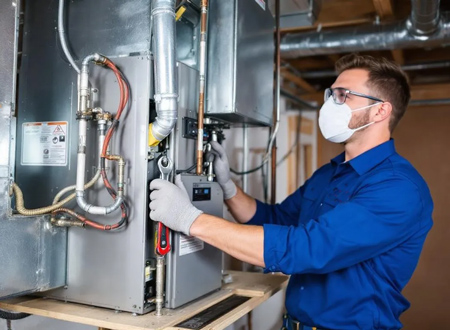
Furnace Size and Capacity
Proper furnace sizing ensures optimal efficiency, comfort, and longevity of your heating system. Furnace capacity, measured in British thermal units (BTUs), must match your home’s heating requirements calculated through a professional load calculation.
BTU Requirements by Home Characteristics:
The general rule of 30-60 BTUs per square foot provides a starting point, but actual requirements depend on insulation quality, window efficiency, ceiling height, and climate zone.
- Well-insulated newer homes: 30-40 BTUs per square foot
- Average insulation in homes: 40-50 BTUs per square foot
- Poorly insulated older homes: 50-60 BTUs per square foot
Common Residential Furnace Sizes:
- 40,000-60,000 BTU: Small homes and condos ($2,500-$4,500)
- 60,000-80,000 BTU: Average family homes ($3,500-$6,000)
- 80,000-100,000 BTU: Large homes ($4,500-$7,500)
- 100,000+ BTU: Very large or poorly insulated homes ($6,000-$10,000+)
Consequences of Improper Sizing:
Oversized furnaces cycle on and off frequently, reducing efficiency and comfort while increasing wear. Undersized units run constantly, struggling to maintain temperature and consuming excessive energy. Professional load calculation prevents these costly mistakes.
Energy Efficiency Ratings (AFUE)
Annual fuel utilization efficiency (AFUE) measures how effectively your furnace converts fuel into usable heat. Higher efficiency ratings reduce heating costs but increase upfront furnace pricing.
Standard Efficiency Furnaces (80-89% AFUE): $2,500-$4,500
These older furnaces meet basic efficiency requirements but waste 11-20% of fuel through exhaust. They represent the most affordable option for budget-conscious homeowners.
Mid-Efficiency Furnaces (90-95% AFUE): $3,500-$6,000
Mid-efficiency models offer significant savings of energy over standard units while maintaining reasonable purchase prices. They’re ideal for moderate climates and average-sized homes.
High Efficiency Furnaces (96%+ AFUE): $4,500-$8,000
High efficiency furnaces extract maximum heat from fuel, with some models achieving 98% efficiency. These condensing units require special venting but provide maximum energy savings.
Annual Energy Savings Calculations:
A typical 2,000 square foot home upgrading from a 70% AFUE furnace to a 95% AFUE model can save approximately $300-$500 annually on energy bills, depending on local fuel costs and usage patterns.
Installation Complexity and Labor Costs
Labor costs typically account for 30-50% of your total furnace replacement cost, varying significantly based on installation complexity and regional wage rates.
Standard Installation Labor Rates:
- Basic installation: $75-$100 per hour, 6-8 hours total
- Complex installation: $85-$120 per hour, 12-16 hours total
- Emergency/weekend service: 150-200% premium over standard rates
Factors Increasing Installation Complexity:
Simple furnace replacement in the same location with existing connections represents the most cost-effective scenario. Costs increase substantially when installations require:
- New gas lines or electrical service upgrades
- Modifications or replacements of ductwork
- Relocation to a different area of the home
- Structural modifications for larger units
- Specialized venting for high-efficiency furnaces
Seasonal Labor Rate Variations:
Peak heating season (October through February) typically sees 15-30% higher labor costs due to increased demand and emergency service calls. Planning replacement during off-season months can reduce labor costs significantly.
Additional Costs to Consider
Beyond the furnace unit and basic installation, several additional expenses can add $1,000-$5,000 or more to your project. Understanding these potential costs helps prevent budget surprises and ensures proper planning for a complete replacement.
These additional costs often catch homeowners off guard, particularly during emergency replacements when time pressure limits comparison shopping and cost optimization opportunities.
Permits and Inspections
Most municipalities require permits for furnace replacement to ensure safety compliance and proper installation according to local building codes.
Permit Requirements and Costs:
Permit fees vary significantly by location, ranging from $400 in smaller communities to $1,500 in major metropolitan areas. Some regions include inspection services in permit costs, while others charge separately.
- Small towns/rural areas: $400-$800
- Suburban areas: $600-$1,200
- Major metropolitan areas: $800-$1,500
Inspection Timeline and Requirements:
Most jurisdictions require inspections at specific installation milestones: rough-in (gas lines and electrical), final installation, and sometimes follow-up inspections. Failing inspections can delay project completion and require costly corrections.
Consequences of Skipping Required Permits:
Installing without permits risks safety violations, insurance claim denials, and complications during home sales. Professional contractors typically handle permit acquisition, but homeowners should verify compliance.
Ductwork Modifications
Existing ductwork may require updates to accommodate new furnace specifications, particularly when upgrading to high-efficiency furnace models or significantly different furnace sizes.
When Modifications of Ductwork Are Necessary:
- Upgrading from standard to high efficiency (different venting requirements)
- Installing larger capacity furnace (requires bigger ducts)
- Improving inadequate return air systems
- Addressing leaky or poorly insulated ducts
Ductwork Modification Costs:
- Minor modifications: $500-$1,500 (adjusting connections, sealing leaks)
- Partial replacement: $1,500-$3,000 (replacing main trunk lines)
- Complete ductwork replacement: $2,000-$5,000 (new distribution system)
Return Air and Ventilation Upgrades:
High-efficiency furnaces often require larger return air systems and fresh air ventilation. These modifications ensure proper airflow and indoor air quality but add substantial costs to replacement projects.

Old Furnace Removal and Disposal
Removing your existing furnace involves more than simple disconnection, particularly for older units that may contain hazardous materials or require special disposal procedures.
Standard Removal Costs:
Most contractors include basic removal in their installation pricing, but complex removals incur additional charges:
- Simple removal: $60-$150 (standard disconnect and removal)
- Complex removal: $150-$330 (difficult access, multiple components)
- Hazardous material removal: $200-$500 (asbestos, old refrigerants)
Environmental Disposal Requirements:
Modern environmental regulations require proper disposal of furnace components, particularly heat exchangers and electrical components. Reputable contractors handle disposal properly, but homeowners should verify compliance.
Asbestos Considerations in Older Homes:
Homes built before 1980 may have asbestos insulation around furnaces and ducts. Professional asbestos removal adds $1,000-$3,000 to project costs but ensures family safety.
Electrical and Gas Line Upgrades
Modern high-efficiency furnaces often require electrical or gas service upgrades beyond existing home infrastructure capabilities.
Electrical Panel Upgrades:
High-efficiency furnaces with variable speed blowers may require dedicated electrical circuits or panel upgrades in older homes:
- New circuit installation: $300-$800
- Electrical panel upgrade: $1,500-$3,000
- Whole-house rewiring: $8,000-$15,000 (rare but necessary in very old homes)
Gas Line Sizing and Pressure Requirements:
Larger furnaces may require bigger gas lines to ensure adequate fuel supply and proper pressure:
- Gas line extension: $500-$1,500
- Gas meter upgrade: $800-$2,000
- Pressure regulator adjustment: $200-$500
Thermostat and Smart Home Integration:
Modern furnaces often require compatible thermostats for optimal performance:
- Basic programmable thermostat: $150-$300
- Smart thermostat installation: $300-$600
- Multi-zone control system: $1,500-$4,000
When to Replace vs. Repair Your Furnace
The decision between repairing your current furnace and investing in a replacement requires careful analysis of multiple factors beyond simple repair costs. Understanding when each option makes financial sense helps you avoid throwing money at a failing system while also preventing premature replacement of serviceable equipment.
This decision framework considers not just immediate costs but long-term value, energy efficiency, and reliability factors that impact your total cost of home heating over time.
Signs It’s Time to Replace
Several clear indicators suggest that furnace replacement offers better value than continued repairs, even when your current system still operates.
Age and Declining Efficiency:
Furnaces over 15-20 years old typically operate at significantly reduced efficiency compared to modern units. Even well-maintained older furnaces may run at only 60-70% efficiency, while new furnaces achieve 80-98% annual fuel utilization efficiency.
A 20-year-old furnace consuming $2,000 annually in fuel costs could be replaced with a high efficiency model, reducing those costs to $1,200-$1,400, creating immediate savings that help offset the costs of an old furnace replacement.
Frequent and Expensive Repairs:
When annual repair costs exceed $500 or represent more than 30% of replacement cost, replacement typically offers better long-term value. Multiple system failures indicate declining reliability that will continue deteriorating.
Common expensive repairs signaling replacement time:
- Heat exchanger cracks or corrosion ($1,500-$3,000 repair)
- Blower motor replacement ($800-$1,500)
- Gas valve or ignition system failures ($600-$1,200)
Comfort and Performance Issues:
Uneven heating throughout your home, despite proper maintenance, indicates your heating system can no longer meet your home’s needs. This often results from:
- Inadequate furnace capacity for home size
- Deteriorated heat exchanger efficiency
- Worn blower components affecting air circulation
- Incompatible ductwork design
Rising Energy Bills:
Steadily increasing heating costs, despite stable usage patterns and fuel prices, indicate declining furnace efficiency that repairs cannot address. Annual fuel utilization efficiency naturally degrades over time as components wear.
Safety and Code Compliance Concerns:
Older furnaces may lack modern safety features required by current codes:
- Electronic ignition systems (vs. pilot lights)
- Proper venting and combustion air systems
- Carbon monoxide detection and safety shutoffs
- Modern electrical grounding and connections
When Repair Makes Sense
Strategic repairs can extend the life of your furnace and delay costs for replacement when certain conditions exist.
Furnace Under 10 Years Old:
Well-maintained furnaces under 10 years typically justify repairs unless facing catastrophic failure. Most components remain reliable, and warranty coverage may reduce repair costs.
Isolated Component Failures:
Single-component failures in otherwise healthy systems often represent cost-effective repair opportunities:
- Thermostat malfunctions ($200-$500 repair)
- Filter or duct cleaning needs ($150-$400)
- Minor electrical connection issues ($300-$600)
Good Overall System Condition:
Furnaces with consistent maintenance history and good overall condition may justify significant repairs even at 12-15 years old. Professional assessment helps determine remaining system life.
Budget Constraints Requiring Temporary Solutions:
Sometimes immediate budget limitations necessitate repairs to maintain heating through a season, with replacement planned for off-season timing and better financial preparation.
How to Save Money on Furnace Replacement
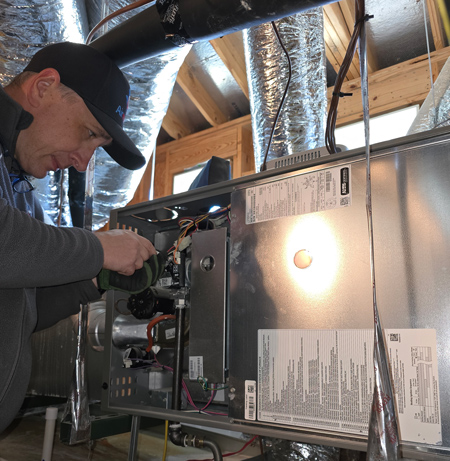
Strategic planning and informed decision-making can reduce your furnace replacement cost by thousands of dollars without compromising quality or long-term performance. These money-saving strategies require advance planning but offer substantial benefits for prepared homeowners.
The key to maximizing savings lies in understanding market dynamics, available incentives, and optimal timing strategies that most homeowners overlook during emergency replacement situations.
Tax Credits and Rebates
Government incentives for energy efficient furnace installations can significantly reduce your net replacement cost, making high-efficiency models more affordable.
Federal Tax Credits for 2025:
The federal government offers tax credits for qualifying high-efficiency new furnaces:
- 97%+ AFUE gas furnaces: Up to $600 tax credit
- Energy Star certified models: Additional utility rebates possible
- Combined system upgrades: Higher credits for comprehensive efficiency improvements
State and Local Utility Rebate Programs:
Many state and local utilities offer substantial rebates for high efficiency new furnace installations:
- Standard rebates: $300-$800 for qualifying models
- Income-qualified programs: Up to $2,000 for eligible households
- Time-limited promotions: Additional seasonal incentives
Financing Programs with Favorable Terms:
Special financing options for energy-efficient appliances often provide:
- 0% interest financing: 12-48 month terms for qualified buyers
- Extended payment plans: Low-interest loans up to 10 years
- Utility-sponsored programs: Below-market interest rates
Optimal Timing Strategies
Strategic timing of your furnace replacement can reduce costs by 15-30% compared to emergency replacements during peak demand periods.
Off-Season Installation Benefits:
Spring and early summer represent optimal replacement timing:
- Labor cost savings: 15-25% lower rates during slow periods
- Equipment discounts: End-of-season inventory clearance
- Contractor availability: More time for careful installation and competitive bidding
Advance Planning vs. Emergency Replacement:
Planning replacement before failure allows:
- Multiple contractor quotes: Competition drives better pricing
- Equipment selection time: Research and compare options thoroughly
- Financing arrangement: Secure favorable terms without time pressure
End-of-Model-Year Equipment Discounts:
Manufacturers typically introduce new models in spring, creating discount opportunities on previous year inventory:
- Equipment savings: 10-20% off retail prices
- Full warranty coverage: New equipment warranties despite discounted pricing
Getting Multiple Quotes
Competitive bidding ensures fair pricing and helps identify the best contractor for your specific needs and budget.
How to Request Comparable Estimates:
Effective quote comparison requires specific information requests:
- Detailed equipment specifications: Model numbers, efficiency ratings, warranty terms
- Complete installation scope: All labor, materials, and additional costs
- Timeline and scheduling: Project start and completion dates
Red Flags in Pricing and Proposals:
Beware of estimates that seem unusually high or low:
- Extremely low bids: Often indicate corners being cut or additional charges later
- Pressure tactics: Legitimate contractors don’t require immediate decisions
- Cash-only deals: Professional contractors accept multiple payment methods
Questions to Ask Potential Contractors:
- Licensing and insurance verification: Current credentials and coverage limits
- Local references: Recent customers with similar projects
- Warranty details: Equipment and labor warranty terms
- Timeline expectations: Realistic project scheduling
Balancing Cost with Quality:
The lowest bid rarely represents the best value when considering:
- Installation quality: Proper sizing, code compliance, safety measures
- Long-term reliability: Quality equipment and professional installation
- Service support: Ongoing maintenance and warranty service
Why Professional Installation is Essential
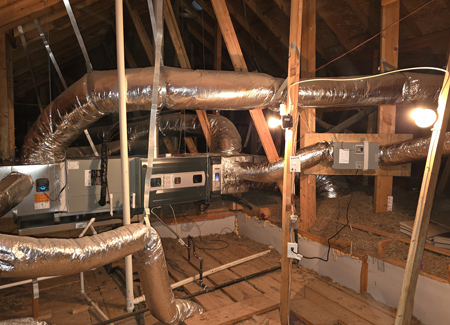
Professional furnace installation ensures safety, efficiency, and warranty protection that DIY installation cannot provide. The complexity of modern heating systems requires specialized knowledge, tools, and certification that only licensed HVAC professionals possess.
Attempting DIY new furnace installation not only risks safety hazards but also typically voids manufacturer warranties and may violate local building codes, creating long-term problems that far exceed any short-term savings.
Safety and Code Compliance
New furnace installation involves multiple safety-critical systems that require professional expertise to ensure proper operation and code compliance.
Gas Line Connections and Leak Prevention:
Natural gas and propane furnaces require precise gas line connections that prevent leaks and ensure proper pressure regulation. Improper connections can cause:
- Gas leaks: Fire and explosion hazards
- Carbon monoxide production: Deadly indoor air contamination
- Poor combustion efficiency: Increased fuel consumption and equipment damage
Professional installation includes pressure testing and leak detection that identifies problems before system startup.
Proper Venting and Combustion Air Requirements:
Modern high-efficiency new furnaces require complex venting systems that ensure:
- Complete exhaust removal: Prevents carbon monoxide accumulation
- Adequate combustion air: Ensures clean burning and efficiency
- Condensate drainage: Prevents water damage from high-efficiency operation
Electrical Connections and Grounding Standards:
Furnace electrical systems must meet national and local electrical codes:
- Proper circuit sizing: Prevents electrical overloads and fires
- Grounding requirements: Ensures electrical safety and equipment protection
- Control wiring: Proper thermostat and safety system connections
Carbon Monoxide Safety Measures:
Professional installation includes carbon monoxide detection and safety systems:
- Detector placement: Strategic location for early warning
- Safety shutoff systems: Automatic equipment shutdown during dangerous conditions
- Ventilation verification: Ensuring adequate fresh air supply
Warranty Protection
Manufacturer warranties typically require professional installation to remain valid, making DIY installation a costly mistake if equipment problems develop.
Manufacturer Warranty Requirements:
Most furnace manufacturers require:
- Licensed contractor installation: Certified HVAC professional credentials
- Code compliance: Installation meeting all applicable building codes
- Proper startup procedures: Professional commissioning and testing
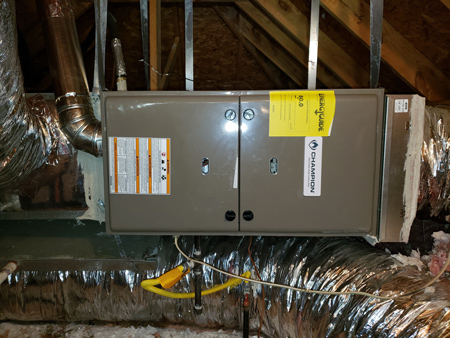
Labor Warranties from Qualified Contractors:
Professional contractors provide installation warranties covering:
- Installation defects: Repairs for improper installation at no charge
- Component failures: Coverage for installation-related equipment problems
- Service guarantees: Ongoing support and maintenance recommendations
Insurance Implications of Improper Furnace Installation:
Homeowner’s insurance may deny claims related to improperly installed equipment:
- Fire damage: Insurance exclusions for unlicensed work
- Carbon monoxide incidents: Liability for improper installation
- Property damage: Equipment failures from poor installation
Choosing the Right Furnace for Your Home
Selecting the optimal furnace involves evaluating multiple factors beyond purchase price to ensure long-term satisfaction and value. The right furnace balances upfront costs with operating efficiency, comfort features, and reliability factors specific to your home and family needs.
This decision requires understanding how different furnace types and features address your specific heating requirements while fitting within your budget for both purchase and ongoing operation.
Single-Stage vs. Two-Stage vs. Variable-Speed
Modern new furnaces offer increasingly sophisticated operation modes that affect both comfort and efficiency, with corresponding impacts on purchase price and operating costs.
Single-Stage Furnaces ($2,500-$4,500):
Single-stage units operate at full capacity whenever running, cycling on and off to maintain temperature. They represent the most affordable option but offer limited comfort control:
- Operation: Simple on/off cycling at full heat output
- Comfort: Temperature fluctuations as system cycles
- Efficiency: Adequate for basic heating needs
- Best for: Budget-conscious buyers, smaller homes, mild climates
Two-Stage Furnaces ($3,500-$6,000):
Two-stage models operate at low capacity most of the time, switching to high capacity only during extreme weather. This provides better comfort and efficiency:
- Operation: Low stage for mild weather, high stage for peak demand
- Comfort: More consistent temperatures and longer run cycles
- Efficiency: Improved part-load performance
- Best for: Average homes, moderate climates, comfort-focused buyers
Variable-Speed Furnaces ($4,500-$7,500):
Variable-speed units precisely adjust heat output to match demand, providing maximum comfort and efficiency:
- Operation: Continuous adjustment from 40-100% capacity
- Comfort: Precise temperature control and improved air quality
- Efficiency: Optimal part-load performance and reduced cycling losses
- Best for: Large homes, extreme climates, premium comfort demands
Modulating Furnaces ($6,000-$9,000):
The most advanced option, modulating furnaces adjust in 1% increments to perfectly match heating needs:
- Operation: Infinite adjustment within operating range
- Comfort: Ultimate temperature precision and air circulation
- Efficiency: Maximum fuel utilization and minimal cycling
- Best for: Luxury homes, extreme efficiency demands, smart home integration
Brand Reliability and Support
Furnace brand selection impacts long-term reliability, service availability, and parts support that affect total ownership costs over 15-25 years of operation.
Top-Rated Furnace Manufacturers:
Leading brands consistently demonstrate superior reliability and customer satisfaction:
- Carrier: Premium efficiency and reliability, extensive dealer network
- Trane: Commercial-grade durability, longer warranty terms
- Lennox: Innovation in efficiency technology, smart home integration
- Rheem: Value-focused quality, good warranty coverage
- Goodman: Budget-friendly options, basic but reliable operation
Warranty Terms and Service Network:
Comprehensive warranty coverage and local service availability ensure long-term support:
- Equipment warranties: 10-20 years on heat exchangers, 5-10 years on components
- Labor warranties: 1-2 years on furnace installation from qualified contractors
- Extended warranties: Optional coverage for complete protection
Parts Availability and Long-Term Support:
Established manufacturers maintain parts inventory and service support throughout expected furnace life:
- Parts availability: 15-20 year minimum commitment from major brands
- Service training: Ongoing contractor education and certification
- Technology updates: Software and control system improvements
Furnace Installation Quality vs. Brand Importance:
While brand matters for long-term reliability, furnace installation quality affects immediate performance and efficiency more than equipment brand. The best furnace performs poorly with inadequate installation, while quality installation maximizes any furnace’s potential.
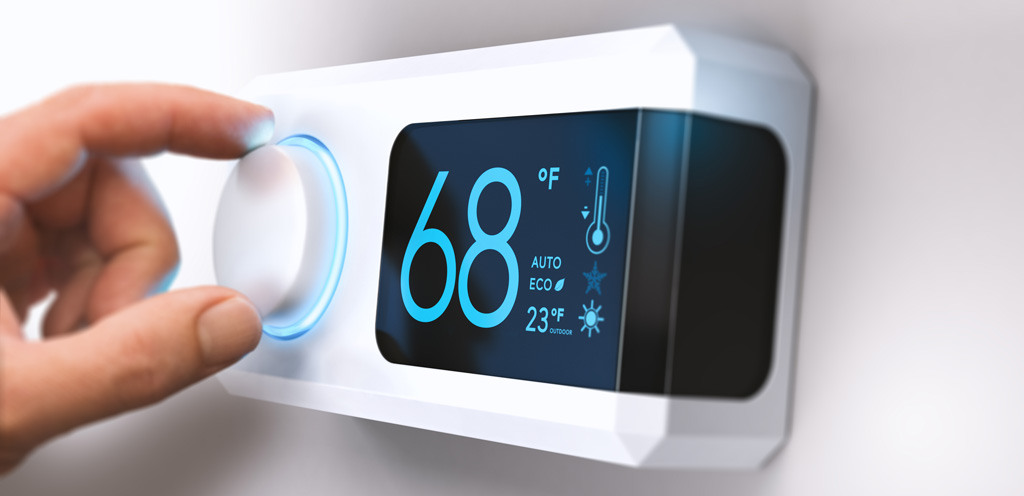
Maintenance Costs and Long-Term Ownership
Understanding ongoing maintenance requirements and long-term ownership costs helps you budget accurately for the complete cost of home heating beyond the initial furnace replacement cost. Proper maintenance significantly impacts both operating efficiency and equipment lifespan.
Regular maintenance represents a small investment compared to replacement costs but provides substantial returns through improved efficiency, reduced repair needs, and extended equipment life.
Annual Maintenance Requirements
Professional furnace maintenance ensures optimal performance, safety, and longevity while maintaining warranty coverage and preventing costly emergency repairs.
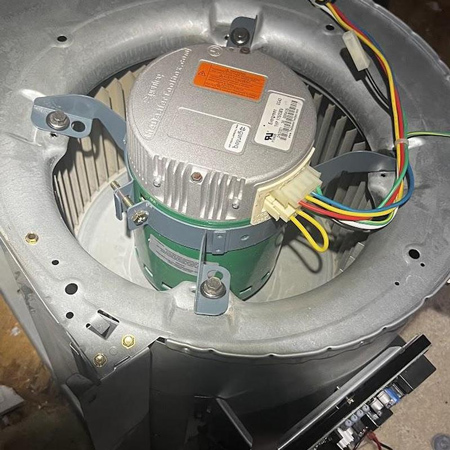
Professional Tune-Up Services ($60-$550 annually):
Annual professional maintenance typically includes:
- Complete system inspection: All components checked for wear and proper operation
- Cleaning and lubrication: Blower components, motors, and moving parts
- Safety system testing: Carbon monoxide detection, gas connections, venting
- Efficiency optimization: Combustion adjustment, airflow verification
Service plan pricing varies by complexity:
- Basic annual service: $60-$150 for standard efficiency furnaces
- Comprehensive maintenance: $200-$350 for high efficiency models
- Premium service plans: $350-$550 including priority service and discounts
Filter Replacement Schedules and Costs:
Regular filter changes maintain airflow and protect equipment:
- Standard filters: $5-15 each, monthly replacement during heating season
- High-efficiency filters: $15-40 each, quarterly replacement
- Electronic air cleaners: $50-100 annual maintenance plus periodic cleaning
Read more about choosing the Right Furnace Filter Size
Ductwork Cleaning and Maintenance:
Periodic duct cleaning maintains air quality and system efficiency:
- Professional duct cleaning: $300-800 every 3-5 years
- Duct sealing services: $500-1,500 for comprehensive leak repair
- Insulation improvements: $1,500-3,000 for complete duct system upgrade
Preventive Maintenance vs. Repair Cost Comparison:
Annual maintenance costs represent a fraction of major repair expenses:
- Annual maintenance: $150-400 average
- Heat exchanger repair: $1,500-3,000
- Blower motor replacement: $800-1,500
- Control system repair: $400-1,000
Expected Lifespan and Performance
Modern furnaces typically operate reliably for 15-25 years with proper maintenance, though performance gradually declines over time affecting both efficiency and comfort.
Average Furnace Lifespan by Type:
Different furnace types demonstrate varying longevity:
- Gas furnaces: 15-20 years average, up to 25 years with excellent maintenance
- Electric furnaces: 20-25 years due to fewer moving parts and no combustion
- Oil furnaces: 15-20 years, dependent on fuel quality and maintenance
- High efficiency models: May have shorter lifespans due to complexity, but offer better efficiency
Factors Extending Furnace Life:
Several practices significantly extend equipment lifespan:
- Regular professional maintenance: Annual tune-ups prevent premature wear
- Quality air filtration: Protects components from dirt and debris
- Proper sizing: Correctly sized units experience less stress and cycling
- Consistent operation: Steady use patterns reduce thermal stress
Performance Degradation Patterns:
Furnace efficiency naturally declines over time:
- Years 1-5: Minimal efficiency loss with proper maintenance
- Years 6-10: 5-10% efficiency decline typical
- Years 11-15: 10-20% efficiency reduction common
- Years 16+: Significant performance degradation accelerates
Planning for Future Replacement Cycles:
Understanding replacement timing helps financial planning:
- Start research: At 12-15 years old, begin monitoring newer technology
- Budget preparation: Set aside $300-500 annually for future replacement
- Technology upgrades: Consider efficiency improvements and smart home integration
Regular maintenance and proper operation maximize your investment in furnace replacement while ensuring reliable, efficient heating throughout the system’s expected lifespan.
FAQ
Budget $5,000-$8,000 for a typical complete furnace replacement including equipment, installation, permits, and minor modifications. Add 20-30% contingency ($1,000-$2,400) for unexpected costs like ductwork repairs, electrical upgrades, or complex venting requirements. High-efficiency systems or homes requiring significant modifications may reach $10,000-$12,000 total investment.
Yes, if your furnace is over 15 years old and operating at 70% AFUE or lower. A typical 2,000 sq ft home can save $300-$500 annually upgrading from 70% to 95% AFUE, with payback periods of 8-12 years. Factor in tax credits up to $600 and utility rebates that can reduce net costs by $800-$1,500, making high-efficiency upgrades financially attractive.
Emergency winter replacements typically cost 15-30% more due to high demand, limited contractor availability, and expedited service charges. Equipment selection may be limited to immediately available inventory. Consider temporary heating solutions (space heaters, emergency repair) to delay replacement until off-season when possible, saving $1,000-$2,500 on the same installation.
Most HVAC contractors offer financing through manufacturer programs or third-party lenders. Typical options include 0% interest for 12-24 months, low-rate loans (3-8% APR) for 5-10 years, or utility-sponsored programs with below-market rates. Energy-efficient furnaces often qualify for better financing terms. Always compare total costs including interest against cash pricing discounts.
High-efficiency furnaces require larger return air systems and different venting than standard units. Signs your ductwork needs modification include: undersized return ducts (less than 20% of supply duct area), single return register for multiple rooms, or existing metal venting for planned high-efficiency installation. Professional load calculation and ductwork assessment during quotes identify necessary modifications before installation begins.